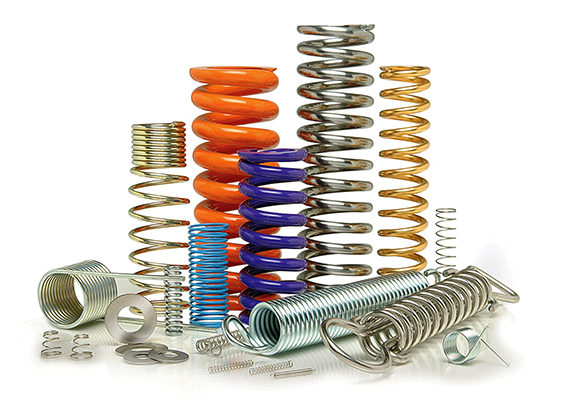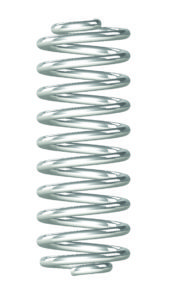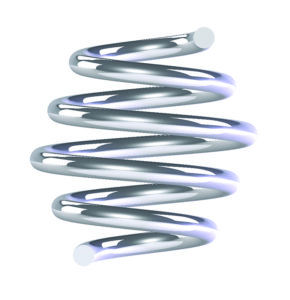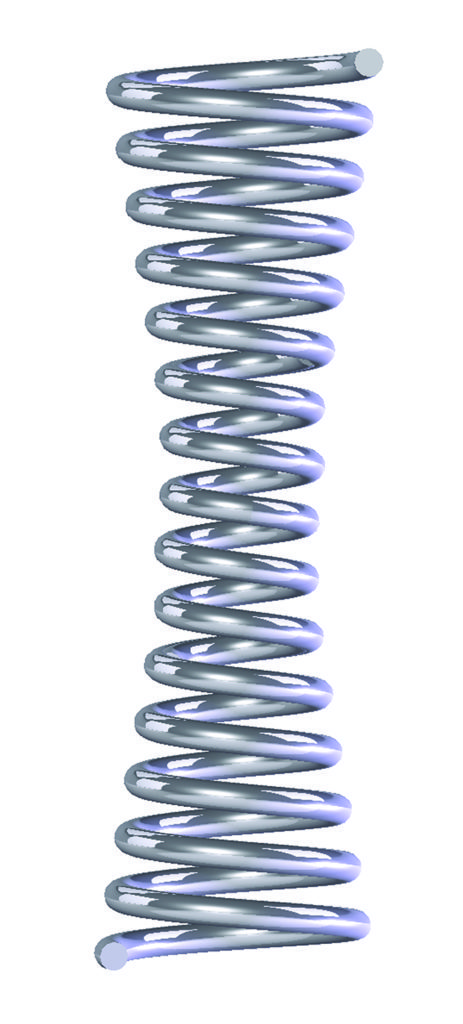Engineers incorporate compression springs in motion designs that need linear compressive forces and mechanical energy storage — designs such as pneumatic cylinders and push-button controls, for example. The most conventional compression spring is a round metallic wire coiled into a helical form.


The most common compression spring, the straight metal coil spring, bends at the same diameter for its entire length, so has a cylindrical shape.
Cone-shaped metal compression springs are distinct in that diameter changes gradually from a large end to a small end; in other words, they bend at a tighter radius at one end. Cone-shaped springs generally go into applications that need low solid height (the total height when compressed) and higher resistance to surging. Whether cylindrical or cone shaped, helical compression springs often go over a rod or fit inside a hole that controls the spring’s movement.
Other configuration types include hourglass (concave), barrel (convex), and magazine (in which the wire coils into a rectangular helix).

Most compression springs have squared and ground ends. Ground ends provide flat planes and stability under load travel. Squareness is a characteristic that influences how the axis force produced by the spring can be transferred to adjacent parts.
Although open ends may be suitable in some applications, closed ends afford a greater degree of squareness.
Squared and ground end compression springs are useful for applications that specify high-duty springs; unusually close tolerances on load or rate; minimized solid height; accurate seating and uniform bearing pressures; and minimized buckling.

The key physical dimensions and operating characteristics of these springs include their outside diameter (OD), inside diameter, wire diameter, free length, solid height, and spring rate or stiffness.
• Free length is the overall length of a spring in the unloaded position.
• Solid height is the length of a compression spring under sufficient load to bring all coils into contact with adjacent coils.
• Spring rate is the change in load per unit deflection in pounds per inch (lb/in.) or Newtons per millimeter (N/mm).
The dimensions, along with the load and deflection requirements, determine the mechanical stresses in the spring.
When the design loads a compression spring, the coiled wire is stressed in torsion and the stress is greatest at the wire surface.
As the spring is deflected, the load varies, causing a range of operating stress. Stress and stress range affect the life of the spring.
The higher the stress range, the lower the maximum stress must be to obtain comparable life. Relatively high stresses may be used when the stress range is low or if the spring is subjected to static loads only.
The stress at solid height must be low enough to avoid permanent damage because springs are often compressed solid during installation.







Leave a Reply
You must be logged in to post a comment.